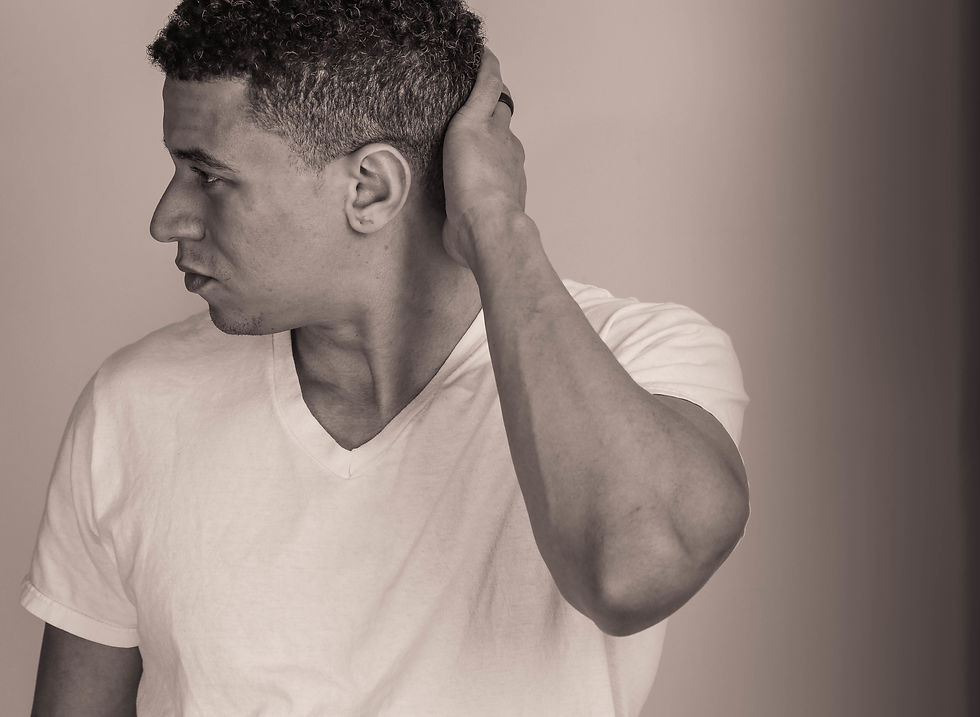Why Cranial Sutures Matter: The Forgotten Frontier in Brain Injury Rehabilitation
- Musculoskeletal Solutions team
- Jul 13
- 4 min read
AUCKLAND PATIENTS TRAVEL TO CHRISTCHURCH FOR THIS REVOLUTIONARY TREATMENT

Introduction: Beyond Passive Care
In New Zealand—and across Australasia—concussion treatment has long focused on passive strategies: rest, symptom tracking, and carefully escalating stimuli. While monitoring remains important, these approaches do not treat structural imbalances that may linger after a head injury. As biomechanics shows, minor concussive forces can misalign cranial sutures, altering fluid dynamics and cranial function.
At Musculoskeletal Solutions, NasalRX (Cranial Facial Release) offers the first active, non-invasive structural step in concussion care—realigning sutures and restoring internal cranial function where passive methods fall short. Patients travel all over the country - a search for 'concussion clinic Auckland' we find patients booking into the Musculoskeletal Solutions clinic in Christchurch - 2 visits - a series of 4 consecutive days of treatment and the procedure is done-for little cost - well worth the dramatic changes in outcome.
1. The Overlooked Impact: Cranial Sutures and Concussion Mechanics
Concussions result from rapid forces—linear and rotational accelerations applied to the skull that transfer to the brain. However, what receives less attention is the structural effect on the skull itself:
Cranial sutures—fibrous joints connecting skull bones—can shift, particularly at the skull base (e.g., sphenoid, temporal regions).
Studies using 3D CT scanning show sutural deformation, jugular foramen stenosis, and petrous bone asymmetry, even after mild TBIs—linked to chronic post-concussion symptoms.
Biomechanical modeling demonstrates that fine cranial motion occurs even in adults and may be affected by trauma-induced internal pressure changes [ iahe.com ].
These structural distortions may impair cerebrospinal fluid (CSF) flow, sinus drainage, intracranial pressure regulation, and cranial bone motility—components not addressed by passive treatment.
Concussion treatment Auckland
2. Why Structural Imbalances Affect Recovery
Persisting post-concussion symptoms often root not only in brain tissue injury but in cranial mechanics:
Misaligned sutures restrict cranial rhythmic impulse—subtle cyclic expansion and contraction linked to CSF pulsation SpringerLink+15trevorcragg-osteopathy.com+15MSKSolutions+15 .
Sutural stiffness reduces intracranial compliance, amplifying internal pressures with cardiovascular or respiratory fluctuations .
Sutures near sinuses impede drainage and fluid movement, potentially prolonging headaches, dizziness, sleep disruption, and cognitive fog.
Conventional approaches—rest and controlled exercise—don't resolve these structural restrictions, letting physical tension and pressure disregulation endure.
3. Traditional Approaches: Effective for Some, But Limited
Current concussion care in New Zealand emphasizes:
Initial rest followed by symptom-based staging
Vestibular and cervical rehab, focusing on balance and neck mobility
Passive symptom coordination, via headache management, sleep advice, and graded return-to-play
These strategies help close to 70% of patients, but a significant minority remain symptomatic long-term [ Headache & Tendon NZHeadache & Tendon NZ+2Headache & Tendon NZ+2Headache & Tendon NZ+2 ].
Research finds that while physical rehab helps, cumulative recovery plateaus unless structural cranial factors are restored. Concussion clinic Auckland
4. NasalRX: Targeting Cranial Structural Repair
NasalRX, a modern application of Cranial Facial Release (CFR), fills the structural void left by passive care:
A tiny balloon is inserted into each nasal passage and gently inflated—a procedure devised in the 1940s by Dr. J. Richard Stober [ YouTube+6MSKSolutions+6Headache & Tendon NZ+6 ].
It exerts microscopic pressure on the sphenoid bone and neighboring sutures, relieving restrictions and unlocking cranial mobility
iahe.com+8MSKSolutions+8Headache & Tendon NZ+8 ].
This process aims to reopen sinus drainage, restore CSF flow, and normalise cranial rhythmic motion—critical for intracranial pressure regulation and brain tissue health
Headache & Tendon NZ+2Conquer Concussion+2trevorcragg-osteopathy.com+2 ].
Concussion clinic Auckland
5. How NasalRX Complements Rehabilitation
The picture:
Vestibular rehab restores balance
Neck therapy addresses cervical pain
Aerobic activity improves cardiovascular response
NasalRX addresses cranial structure and fluid mechanics
NasalRX helps unlock cranial restriction, allowing active rehab to function more effectively and reducing residual symptoms like headache and brain fog.
Concussion clinic Auckland
6. Patient Stories & Clinical Impact
Although formal RCTs are still emerging, early clinical feedback is strong:
At Musculoskeletal Solutions, patients often report:
Improved sinus drainage
Reduced headaches and cognitive fog
Enhanced sleep quality and breathing mechanics
Similar functional gains are reported across Australasian clinics using CFR or Endonasal Release techniques Headache & Tendon NZ+4Conquer Concussion+4Headache & Tendon NZ+4 ].
This rapid transition—from constraint to relief—highlights NasalRX’s structural impact.
NasalRX offers affordable structural correction without drugs or major procedures.
Concussion clinic Auckland
7. Integrating a NasalRX practitioner into Your Concussion Plan
A proposed recovery pathway:
NasalRX practitioner structural sessions (4–6 treatments)
Supportive therapies: sleep, cognition, emotional wellbeing
Graded aerobic, vestibular, cervical rehab
This combines active and structural care, tackling the ultimate causes of persistent symptoms.
8. What to Expect from NasalRX
Treatment experience: Tiny balloon inflation lasting a few seconds; patients may hear "pops" as bones shift [ Headache & Tendon NZHeadache & Tendon NZConquer Concussion ].
Sessions typically needed: 4–8 appointments on average for full release effect.
Adverse effects: Minimal; maybe mild pressure or discomfort. Not suitable for bleeding disorders—consult your experienced professional in NasalRX, Musculoskeletal Solutions.adache & Tendon NZ ].
9. FAQs
Is it evidence-based? Structural biomechanics and clinical reports support its rationale. While RCTs are pending, current studies show cranial bone misalignment contributes to symptoms. There are several clinics in the United States offering this treatment with consistent patients feedback showing remarkable results.
Who is it for? Best suited for individuals with ongoing post-concussion symptoms—physical, cognitive, or sleep/respiratory disturbances., sinus issues, mouth breathing issues, severe headache issues. Patients fly in for 4 days and again in 3-4 weeks for rapid change - a dramatic turning point in recovery for many.
Conclusion: The Revolution in Concussion Care
Traditional concussion management in New Zealand emphasises passive care and fails to treat cranial structural dysfunction—the hidden cause of long-lasting symptoms. NasalRX empowers practitioners to restore cranial suture integrity, facilitating true recovery. When paired with active rehabilitation, it provides a complete, modern concussion solution for athletes and patients nationwide - concussion treatment Auckland offers little result in clinic options available that produces the profound results that can compare with NasalRX. Book online start your recovery journey today.



Comments